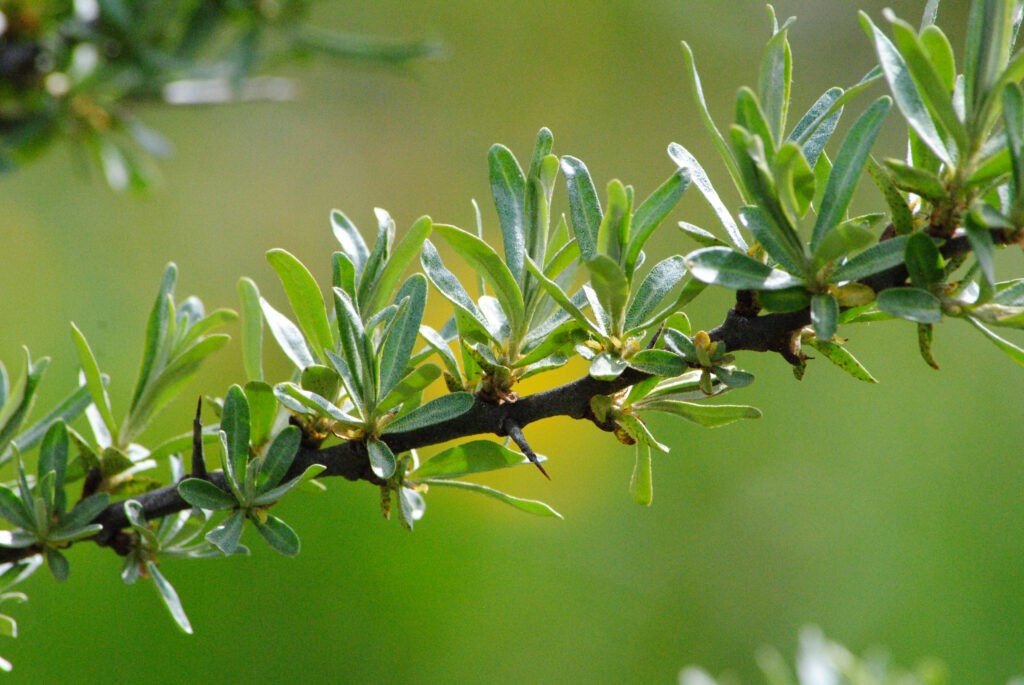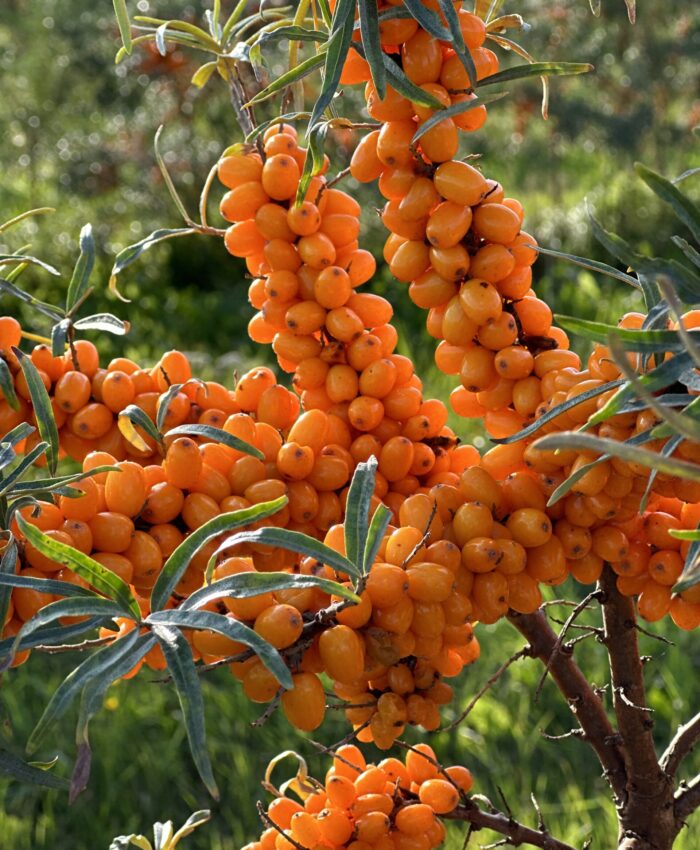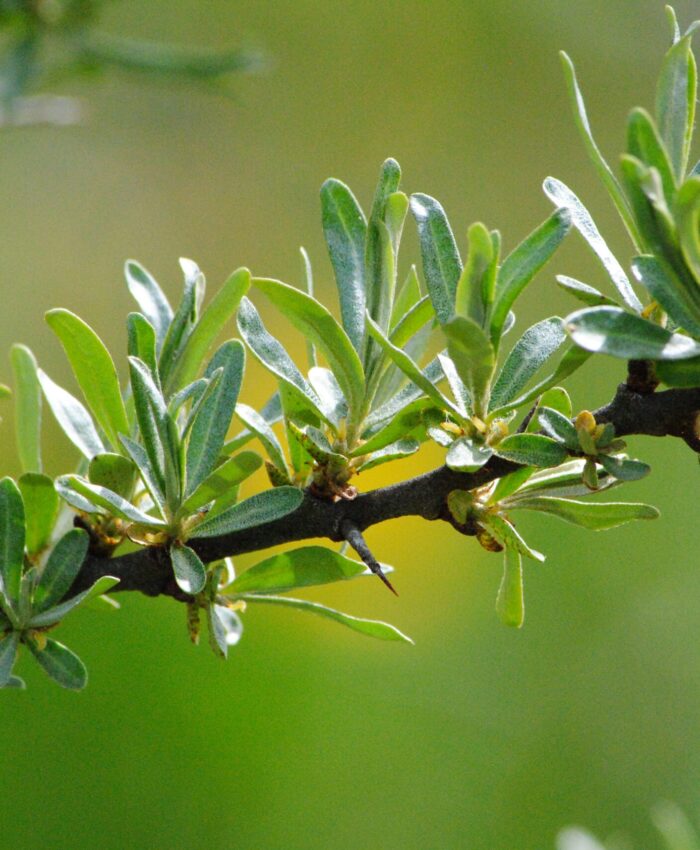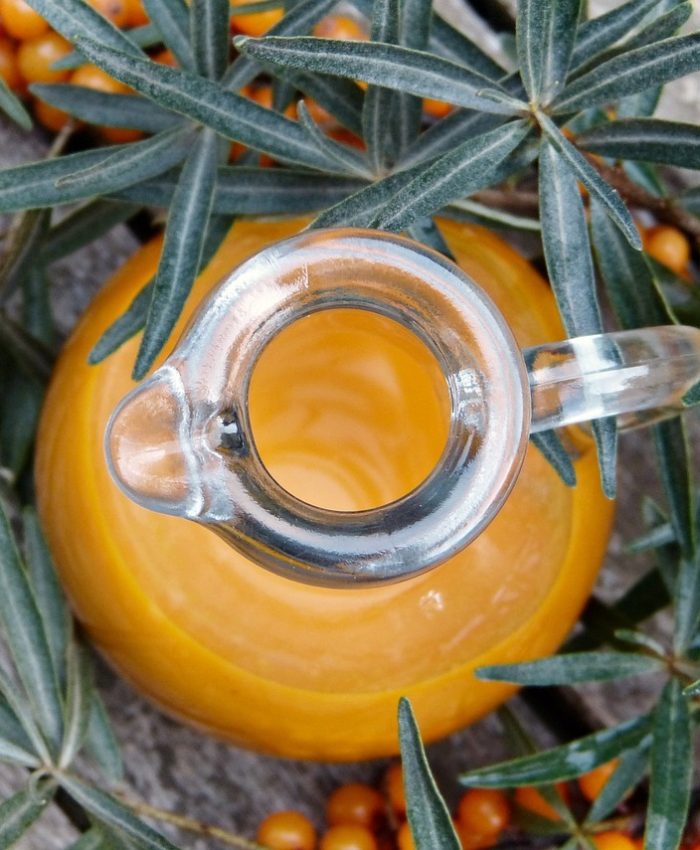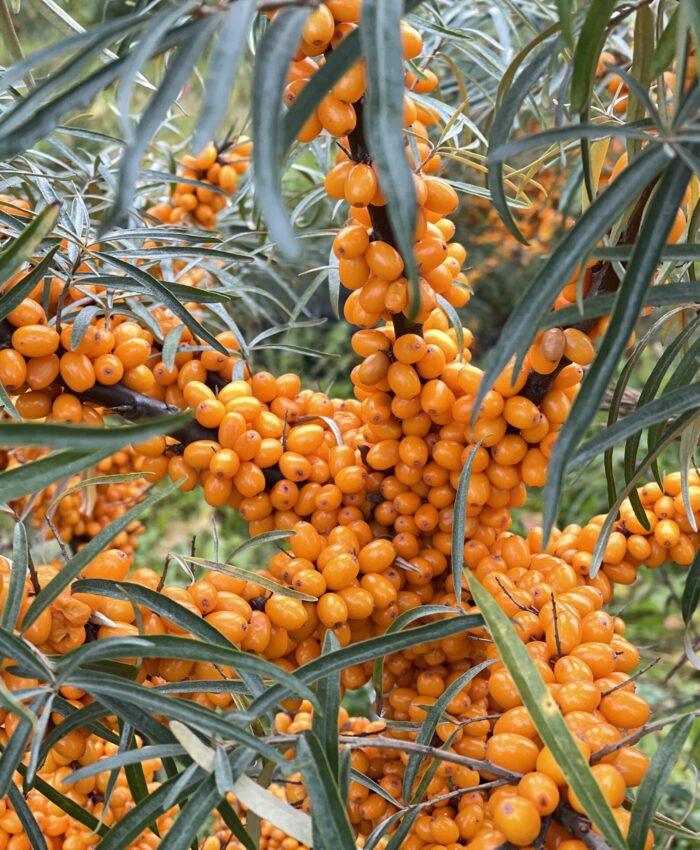Sea Buckthorn Leaves
Sea buckthorn (Hippophae rhamnoides L.) is best known for its vibrant orange berries, but its leaves also hold remarkable health-supporting properties. Rich in polyphenols, flavonoids, minerals, and antioxidants, these leaves have long been used in traditional medicine and are now gaining attention in natural cosmetics and dietary supplements. They’re also easy to use at home.
Traditional Use and Folk Medicine
The medicinal use of sea buckthorn leaves dates back centuries. In Tibetan and Mongolian medicine, the plant was used to restore balance and strengthen the body. The Tibetan pharmacopoeia lists sea buckthorn as supporting digestion, circulation, and skin. Leaf decoctions were traditionally combined with herbs like licorice or turmeric to aid liver and spleen function.
In traditional Chinese medicine, sea buckthorn leaves were believed to restore “vital energy” and help recovery from illness, especially in cases of coughs or colds. In Siberia, hot infusions of the leaves were used to strengthen immunity, reduce fever, and relieve colds. Due to their tannin content, leaves were also used to ease digestive issues like diarrhea. Ground leaf paste was applied to wounds to promote healing and reduce inflammation.
Central Asian nomads used leaf compresses to treat skin irritations and minor wounds. In the 20th century, Soviet scientists included sea buckthorn leaves in adaptogen studies, investigating their ability to enhance the body’s resistance to stress.
Chemical Composition
Sea buckthorn leaves contain a wide range of bioactive compounds:
- Flavonoids (e.g., quercetin, kaempferol, isorhamnetin): Powerful antioxidants that support cellular health and vascular function.
- Tannins and catechins: Aid digestion and exhibit antimicrobial activity.
- Vitamins C and E: Present in smaller amounts than in the berries, but help strengthen immune function and reduce oxidative stress.
- Minerals: Potassium, magnesium, calcium, iron, and others support metabolism and electrolyte balance.
- Fatty acids and phytosterols: Present in trace amounts, they help reduce inflammation and support skin health.
Modern Research and Therapeutic Potential
Scientific studies have shown promising effects:
- Antioxidant protection: Leaf extracts can neutralize free radicals and reduce cellular damage.
- Blood sugar regulation: Animal studies suggest extracts may lower glucose levels and improve insulin sensitivity.
- Liver support: Extracts help normalize liver enzyme levels and reduce oxidative stress.
- Antimicrobial & antiviral action: Some extracts inhibit the growth of certain bacteria and viruses.
- Vascular health: Flavonoids help maintain blood vessel elasticity and circulation.
Contemporary Uses
Today, sea buckthorn leaves are used in various forms:
- Herbal tea & infusions: Mild grassy flavor similar to green tea. Pairs well with mint, lemon balm, or rosehip.
- Powders and capsules: Standardized extracts for immune, metabolic, and stress support.
- Cosmetics: Used in products for sensitive or tired skin due to their soothing, balancing properties.
- Animal feed: Used as a supplement to improve animal health naturally.
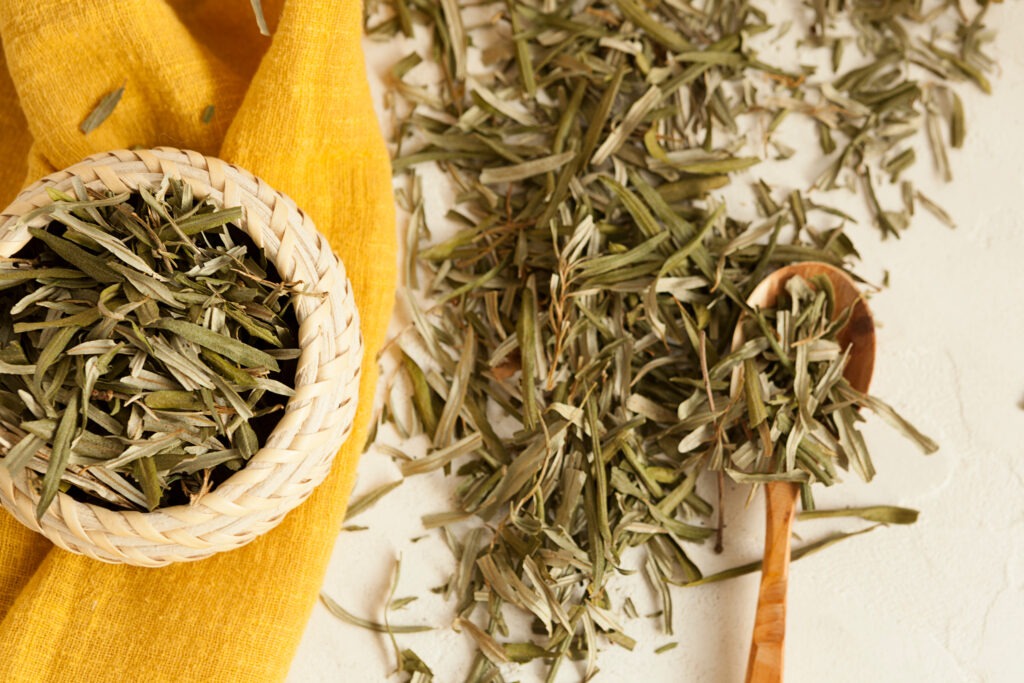
How to Use Sea Buckthorn Leaves at Home?
- Herbal Tea
Steep 1–2 teaspoons of dried leaves (or a small handful of fresh leaves) in 250 ml of hot water (90–95°C) for 10–15 minutes. Add ginger, honey, or lemon zest to taste. - Skin or Hair Rinse
Boil 2 tablespoons of dried leaves in 500 ml of water for 15 minutes. Cool and use as a rinse or apply with a compress to the skin. - Powder for Smoothies or Capsules
Finely grind dried leaves and mix into smoothies, porridge, or fill capsules for daily use.
Gentle on the Stomach
Sea buckthorn leaf tea is suitable for those with acid sensitivity or gastritis. Unlike the berries and their juice, which are rich in organic acids and potentially irritating to sensitive stomachs, leaf tea is gentler. It does not cause acid irritation or aggravate symptoms related to ulcers or reflux. Studies suggest the bioactive compounds in the leaves, such as flavonoids and phenolic acids, may actually soothe the digestive tract and reduce inflammation.
Sustainability
Sea buckthorn leaves are a natural by-product of berry harvesting. Using them reduces agricultural waste and supports a circular production model, adding value to the whole plant and minimizing environmental impact. For farmers, leaf valorization can create additional income streams through tea or extract production. Sea buckthorn leaves can also be composted or used as biodegradable mulch.
By making full use of the plant, we reduce waste and enhance the cultural and ecological value of sea buckthorn. This hardy nitrogen-fixing shrub also prevents soil erosion, making it an ally in sustainable agriculture.
References:
- Geetha, S., et al. (2002). Journal of Ethnopharmacology, 79(3), 373–378.
- Guliyev, V. G., et al. (2004). Phytotherapy Research, 18(7), 553–556.
- Li, T. S. C., & Beveridge, T. (Eds.). (2003). Sea Buckthorn: Production and Utilization. NRC Press.
- Saggu, S., et al. (2007). Food and Chemical Toxicology, 45(4), 609–617.
- Suryakumar, G., & Gupta, A. (2011). Journal of Ethnopharmacology, 138(2), 268–278.
- Upadhyay, N. K., et al. (2010). Evidence-Based Complementary and Alternative Medicine, 7(3), 375–381.

